1847 - Armstrong & Co
1882 - Armstrong, Mitchell & Co
1897 - Armstrong, Whitworth & Co
1928 - Vickers-Armstrong Ltd
1847 - Armstrong & Co
In 1847, engineer William George Armstrong founded the Elswick works at Newcastle, to produce hydraulic machinery, cranes and bridges.
This was soon to be followed by artillery, notably the Armstrong breech-loading gun, which re-equipped the British Army after the Crimean War.
1882 - Armstrong, Mitchell & Co
During the 1870s there was a close relationship between Armstrong & Co and merchant shipbuilder Charles Mitchell & Co of Low Walker.
Charles Mitchell had set up his yard at Low Walker in 1852 and built many merchant vessels including a large number for the Russian Government with which they had a very close relationship.
Armstrong wanted to enter the warship market, as a way of promoting his large caliber guns, but was unable to build ships at Elswick because of a low multi arch bridge across the Tyne at Newcastle.
So Mitchell & Co built all the hulls for the Armstrong warships up to 1882.
In 1882 the company merged with the shipbuilding firm of Charles Mitchell to form Armstrong, Mitchell & Company.
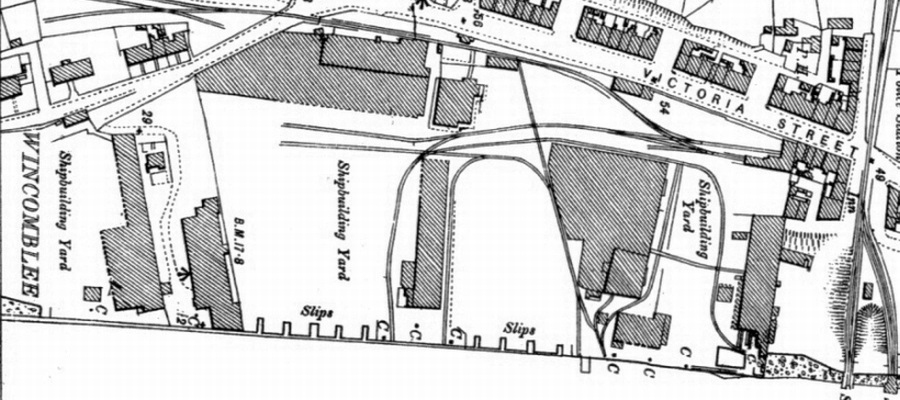
The above map shows the Low Walker yard in about 1895 with 8 or 9 slipways.
The River Tyne is at the bottom of the map and flows approximately north-south at this point.
William Dobson's Yard is at the extreme left at Wincomblee
1882 - The Elswick yard
The new Armstrong, Mitchell company decided to build a new shipyard specialising in warship production, next to the armaments works at Elwick.
This was now possible because in 1876 the low multi arch bridge that had stood since Georgean times was replaced by a new Armstrong designed new swing bridge.
The new shipyard was built at the same time as the first ship from the yard, the PANTHER for the Austro-Hungarian Navy.
With the completion of the yard, the works then extended for over a mile along the north bank of the River Tyne.
The Low Walker yard was then to concentrate on merchant shipbuilding, especially of tankers from 1885.
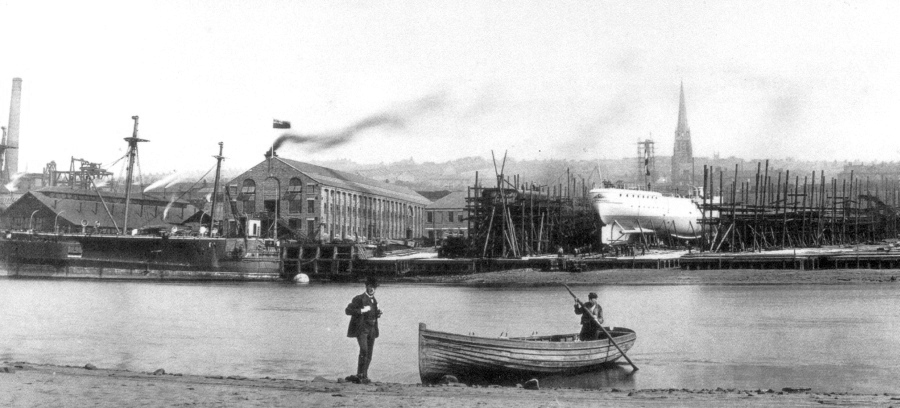
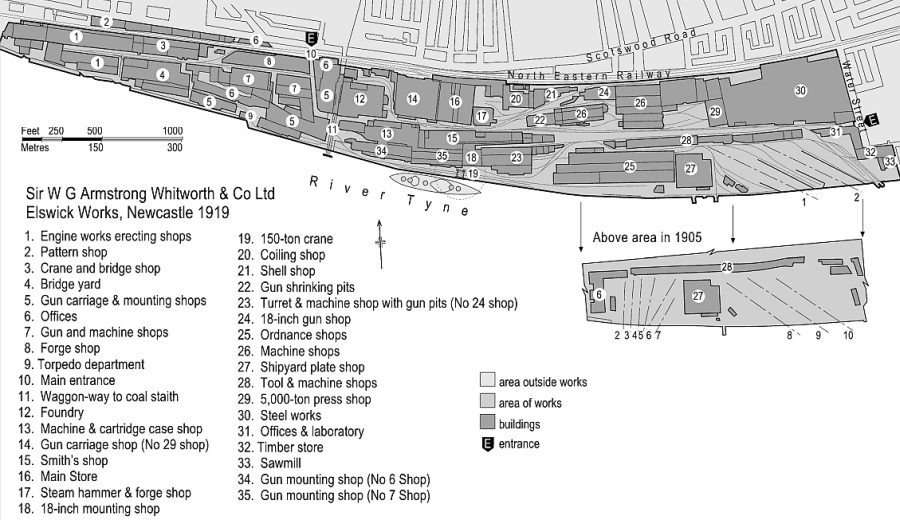
The above photo & yard plan of about 1884 shows the location of the Armstrong Mitchell Elswick yard. Water Street at the right of the map still exists today and the area of the shipyard and Steel Works is now occupied by the Newcastle Business Park.
The map and photo are courtesy of "Down Elswick Slipways" by Dick Keys & Ken Smith.
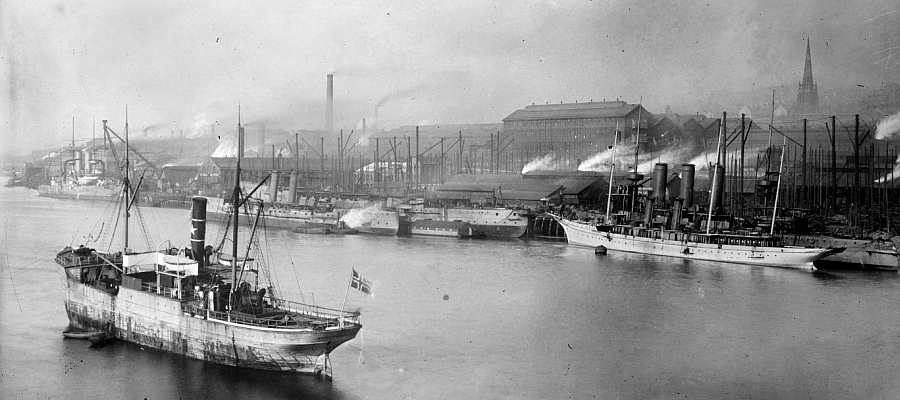
The above photo shows the Elswick yard in about 1904. St Stephen's church spire still exists today
1897 - Armstrong, Whitworth & Co
In 1897, during a period of British naval and armaments expansion Armstrong, Mitchell & Co Ltd purchased and amalgamated with the Manchester based armaments firm of Sir Joseph Whitworth & Company to become Sir W G Armstrong, Whitworth & Co Ltd.
Charles Mitchell had died in August 1895 while still active and going daily to work at the yard and that left no Mitchell’s on the Board.
Warship building at the Elswick yard continued apace but the increasing size of the capital ships meant that Elswick was again constrained by the Newcastle bridges.
The Low Walker yard had its own constraints and the ever longer naval ships were too long for the yard to handle.
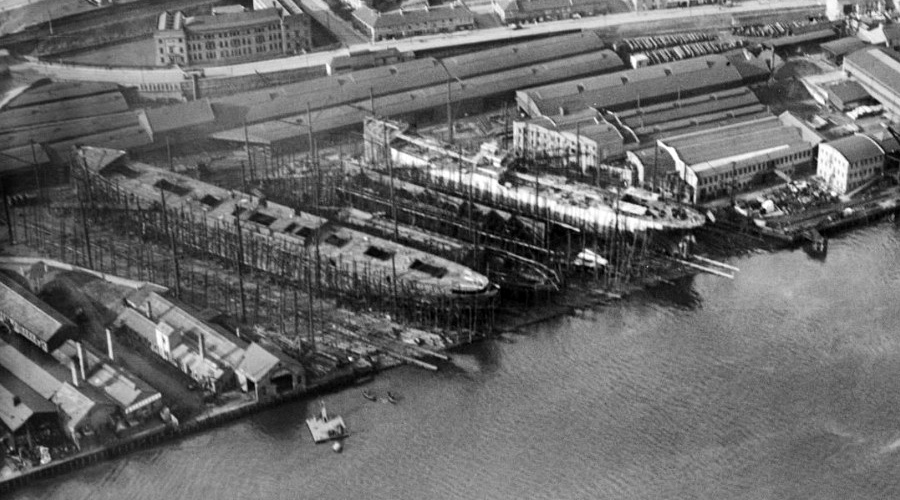
The above photo shows how "length constrained" the Low Walker yard berths were. Photo copyright of Britain From Above
1913 - The Naval yard
Therefore in 1910 the company board looked at setting up a completely new yard well downstream from Newcastle.
A site just upstream from the existing Low Walker yard was chosen and this yard was initially known as the Armstrong yard, then the High Walker yard, but altogether better known as the Walker Naval Yard.
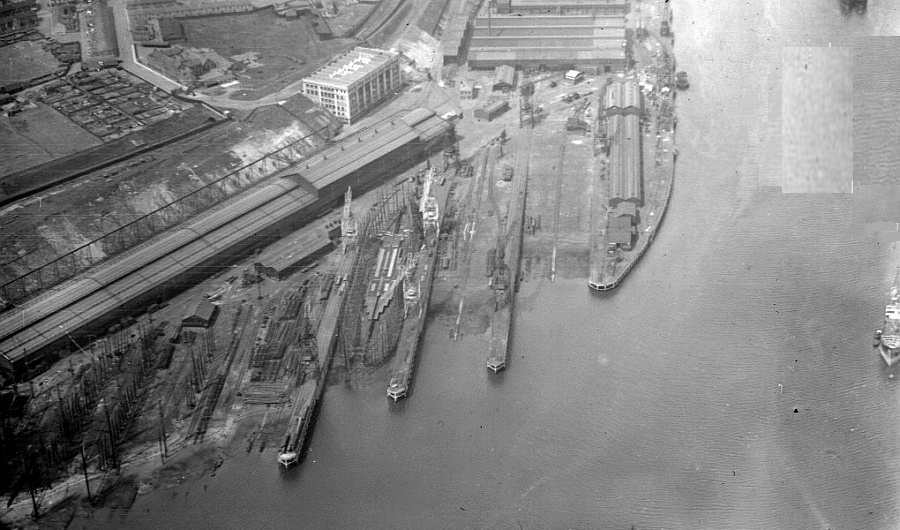
The above aerial photo shows the High Walker yard in about 1935.
|
1920s - The Inter-War years
A lean spell of ship building during and around the depression years meant yards were closed down.
The Elwick yard was closed in 1920 and production was transferred to the Naval Yard.
A disasterous investment in a Newfoundland Power & Paper making facility in 1925 nearly brought the whole company down and it was only saved by a "shot gun" merger with Vickers of Barrow which was completed in 1928.
The new company was called Vickers-Armstrongs Ltd and it then aquired the Dobson yard, adjacent to their Low Walker Yard.
Naval orders were in very short supply and the new Naval yard closed in 1927.
Merchant ship orders were plentiful for a short time and in 1928 the Willington Quay yard was purchased but this surge in orders was short lived and the yard closed in 1931 followed closely by the Low Walker yards in 1932.

The Willington Quay yard was to the right of the Tyne Iron yard on the above map. Map copyright of the Ordnance Survey
|
The Low Walker was re-opened in 1942 by the Shipbuilding Corporation, a government initiative, but the first few ships were built in the name of Armstrong, Whitworth. The yard finally closed in 1947.
|
| | |